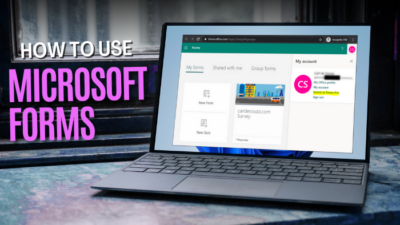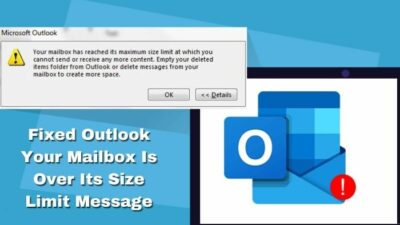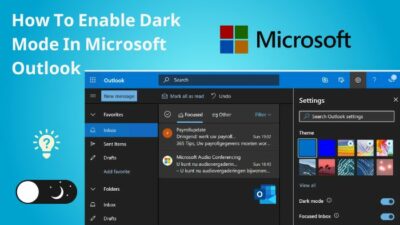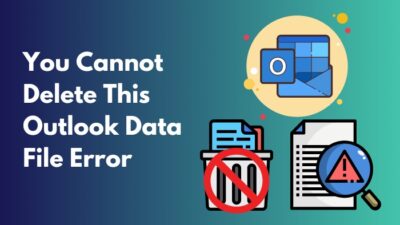Professionals love to organize email inboxes to be more productive. An organized inbox help users increase their ability to communicate and collaborate more effectively.
Outlook inbox rules allow you to set up rules to adjust the significance level of messages as they arrive, transfer them to different folders automatically, or delete them based on particular circumstances.
But the main hardship is Outlook inbox rules do not work when the application is closed or the device is off, which creates significant issues in managing email.
If you encounter the same issue, don’t be upset. You are not alone who is sailing in the same boat. In this post, I will walk you through some proven and tested ways to fix the problem.
Let’s get started without further ado.
Follow our guide to fix Outlook can’t create file error when opening attachment.
How to Fix Outlook Rules Not Running When Closed
Outlook is an email client service system used to send and receive email messages by accessing Microsoft Exchange Server email. It’s a part of the Microsoft Office suite program.
With Microsoft Outlook, you can organize email, share your calendar, store contacts, schedule meetings, share files with other users, and track your tasks.
Outlook has a great feature called inbox rules. You can use inbox rules to perform specified actions on emails as soon as they arrive in your inbox.
However, some Outlook users are reported that rules are not working or running when the Outlook email client application is closed. Users also claim that the inbox rules don’t work when the computer is in sleep mode or shut down.
You may ask a question, why does the Outlook rule not run when closed?
Outlook rules do not run when closed because the inbox rules are set on the Outlook client, not the Outlook server. When your inbox rules are placed on the Outlook client, the rules only work on the Outlook client application. And when you close Outlook, the rules won’t process.
Servers for email are constantly on because they are in charge of receiving, storing, and sending your email. Email servers have server-side rules, which allow you to create rules that will run on that server.
So, here is the elegant solution. Set up inbox rules on the server that act on incoming mail to ensure that the rules always work.
You can also use an Exchange server from a reputed hosted Exchange service to fix your Outlook rules not working when closed. The Exchange server allows you to create rules on the Outlook server, and the rules are always working.
Also, check out our separate post on disable Outlook deleting confirmation message.
How to Fix Outlook Rules Not Working
Outlook inbox rule is a great feature to automatically manage and organize your inbox. If your inbox is messy and wants to organize effectively and effortlessly, you can use the inbox rule feature.
The problem is that sometimes Outlook rules won’t process for some reason. Users are reported that they faced this issue that prevents them from managing Outlook mail properly, which is annoying and frustrating.
So, why does the Outlook rule not working?
The Outlook rules are not working for various reasons, such as rules not being enabled, rules exceeding the quota set for your mailbox, and corruption in the send/receive settings file. Also, the POP4/ IMAP account is corrupted, or rules are configured to run on a different computer occurred for this issue.
These are the most common possible reasons for Outlook rules not working. If you encounter the issue and look for solutions, you are right. Follow the steps below to fix your issue.
Here are the steps to fix the Outlook rules are not working issue:
1. Check Rules are Enabled
First and foremost, check your Outlook application setting to ensure rules are enabled. If the rules are disabled, you encounter the rules are not working issue.
Here are the steps to check rules are enabled on Outlook:
- Open the Microsoft Outlook application.
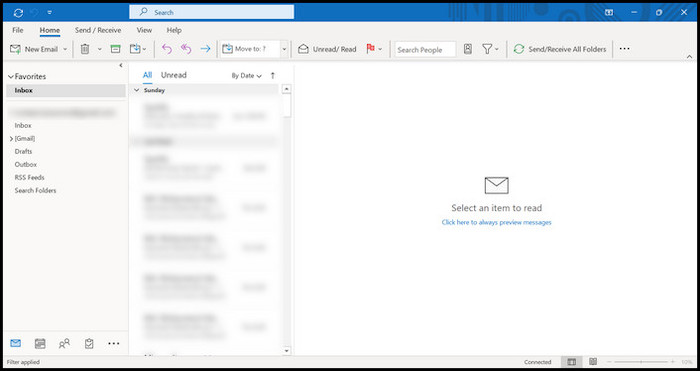
- Click on the File at the top of the menu bar.
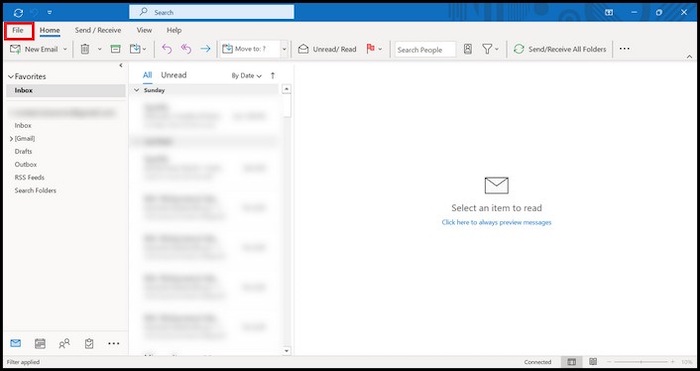
- Select Rules and Alerts options to open the Rules and Alerts window.
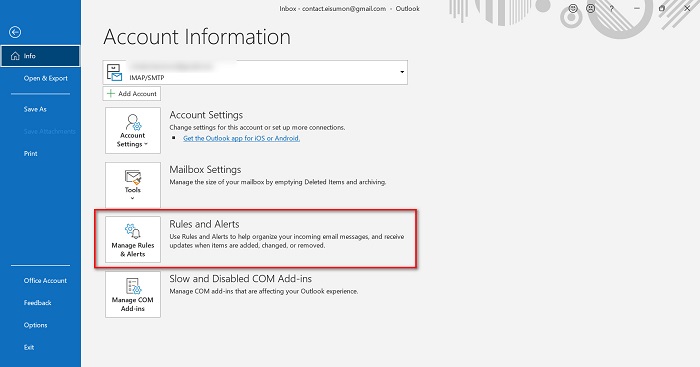
- Ensure the rules checkboxes are It indicates rules are enabled under the Email Rules tab.
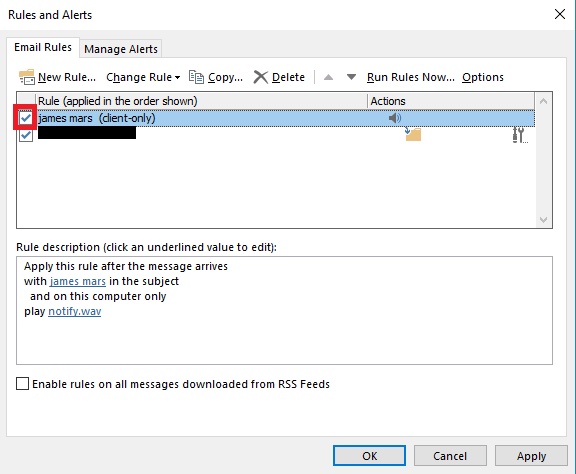
Here’s a complete guide on how to add email signature in Outlook.
2. Reset the SRS File
Outlook rules may not work if the send/receive settings file (SRS) is corrupted. To make the rules work correctly, you can clear the SRS file. These are the actions to take:
Here are the steps to reset the SRS file:
- Open the Windows File Explorer.
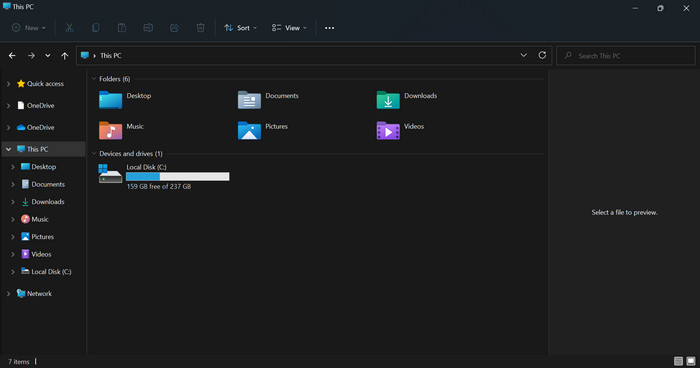
- Enter the following path in the address bar:
- C:\Users\%username%\AppData\Roaming\Microsoft\Outlook
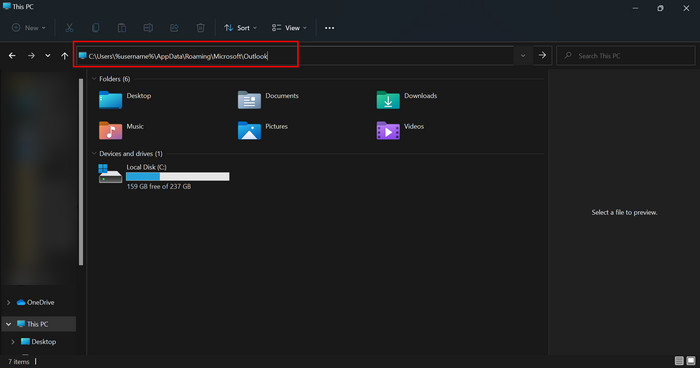
- C:\Users\%username%\AppData\Roaming\Microsoft\Outlook
- In the current window, you will find srs file.
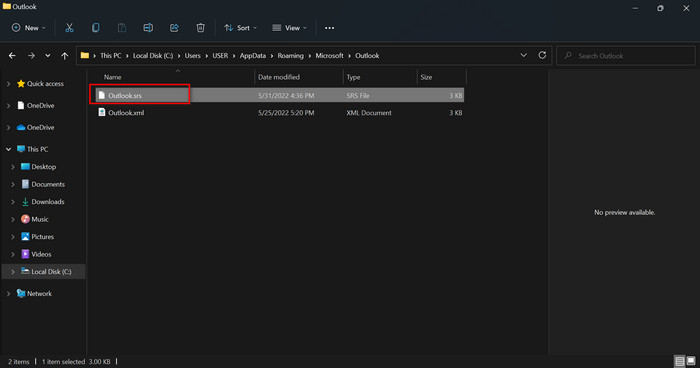
- Right-click on it and select Rename option to rename the file name.
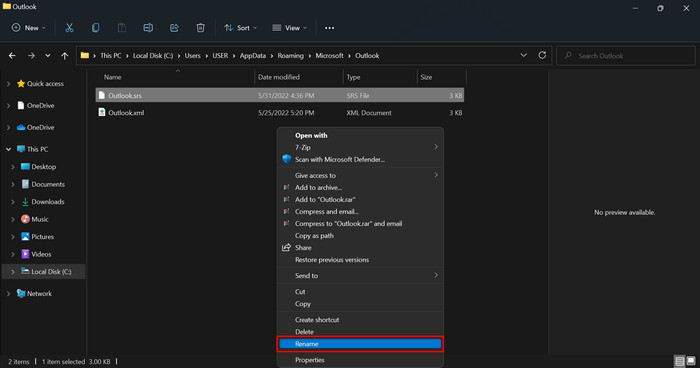
- Rename the srs file to Outlook.srs.old.
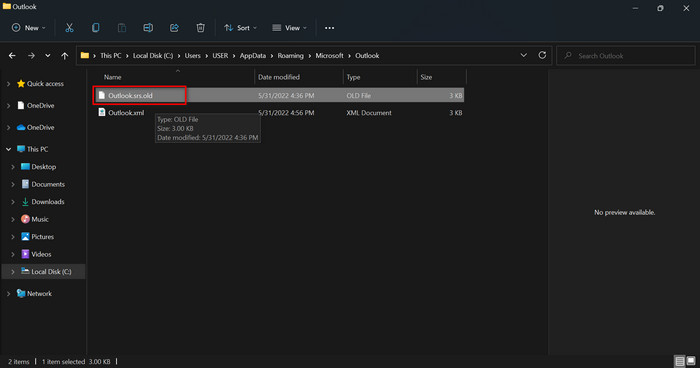
- Open the Outlook application, and the application recreates the new srs file.
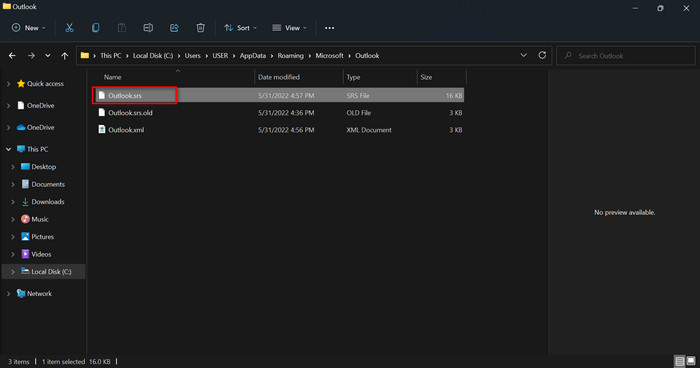
3. Edit & Rename Rules
If your rules name is lengthy, try shortening them to reduce the size of the rule. Reducing the rule’s size helps you fix the rule not working/running issue.
Here are the steps to rename the rules:
- Open the Microsoft Outlook application.

- Click on the File at the top of the menu bar.

- Select Rules and Alerts options to open the Rules and Alerts window.

- Select the rule you want to edit and click the links under the Rule description box.
- Edit the rule and click on the OK button.
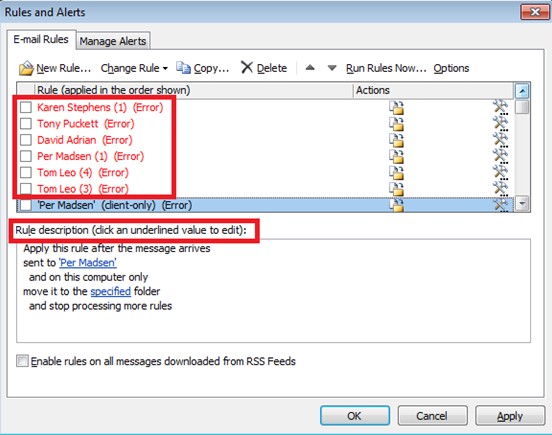
Check out the easiest way to Enable Read Receipts In Outlook.
4. Delete and Recreate the Rules
Another effective method to resolve the rules not working on Outlook is to delete and recreate the rules.
If your Outlook rules are broken, then your rules are not working properly. So, you need to delete the broken rules and recreate them to fix the problem.
Here are some steps to delete the rules:
- Open the Microsoft Outlook application. open-outlook
- Click on the File at the top of the menu bar. click-file
- Select Rules and Alerts options to open the Rules and Alerts window. select-rules&alerts
- Select the rule you want to delete and click on the Delete button.
- Recreate the rules after deleting the broken rules.
Also, check out our separate post on how to fix Outlook server-side rules not working.
5. Convert Client-Based Rules into Server-Based Rules
There are two types of Outlook rules: client-based and server-based. Client-based rules can only be used when the Outlook email client is open.
The message “This rule is a client-rule, and will process only when Outlook is running” appears if you’ve used the Rules Wizard to create a client-based rule.
If your rules are client-based, Outlook is not operating the rules when emails come. To fix the issue, log in to your account using web-based access and recreate the rules to work consistently.
Final Thoughts
The inbox rules help you set some actions that help to organize emails automatically. For example, adjust the significance level of messages as they arrive, transfer them to different folders automatically, or delete them based on particular conditions.
In Outlook, if you face the rules are not running or working properly, first ensure which category rules are created for you. If your rules are Outlook client-based, the rules are not working while the Outlook application isn’t running. Instead of client rules, create the server-based rules.
That’s it. Plenty of solutions to consider. For more information and details, check out our other articles.
Have a good day. Peace!

